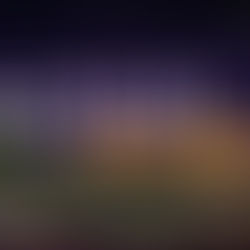New Arrangement: "Inside the Great Gabomba" from Golden Sun: The Lost Age (2002)
A rather tricky one to figure out, but I think the result worked out well in the end - an arrangement of the Inside the Great Gabomba" theme from the classic JRPG, "Golden Sun: The Lost Age" (2002).
Feel free to download the score and recording here!
If you are one of my Patrons, you can now find the MIDI, XML and SIB files I created for this arrangement now available to download from your Patreon Google Drive folder!
Arranger's Note:
"Contextually, we are visiting an ethnic tribal village during one of their ceremonial rituals. Large crowds are chanting and dancing as we enter the massive mechanical powerhouse that is the "Great Gabomba Statue".
Sakuraba reflects all of these elements: the African-esque tribal chanting with vocal shouts; the wooden, mechanical clock-like nature of the statue with dry percussion and unending semiquaver rhythms.
As such, I wanted to enhance these elements as much as possible. Thus I used as few Western instruments as possible, opting instead for more ethnic tribal-esque instruments such as Taiko drums, Frame drums, Kalimbas, various sticks and shakers, and several other dry wooden percussion that are more familiar, such as xylophones and marimbas. All of these elements complement the mechanical wooden dryness of Sakuraba's original.
The African chanting is also left intact to maintain that sense of tribalism and ritualism.
To analyse some of the material, the track begins with a syncopated (off-beat) passage in the bass guitar, which I have moved to the piano here (0:03). This melody is engulfed with various rhythms, most of which emphasize the constant flow of semiquavers in an unending mechanical loop, as if like a clockwork machine. I have further enhanced these rhythms by providing some additional syncopated passages, notably in the Taiko drums, pulli sticks and wood blocks.
Harmonically, we are starting in A Aeolian (A-B-C-D-E-F-G-A) - a modal key which suggests to us a rural otherness outside of the more common "major" and "minor" tonalities - quite appropriate for representing an ethnic tribe. This swims between a tonal center of A - G periodically throughout 0:03 - 0:28. By 0:28, we get an abrupt shift to the relative major - C Mixolydian (C-D-E-F-G-A-Bb-C) - as we modulate into the 2nd section.
Here, the bass melody slowly ascends an A Aeolian scale. To add a bit of treble interest at this passage, I expanded the fluttering semiquavers above with the use of an ornamented acoustic guitar.
Up until this point, the music has been predominantly in a time signature of 3/4. However, I decided to play with this and added a subtle shift into 6/8 (0:47), emphasizing 2 groups of 3 beats, rather than 3 groups of 2 beats. We still perceive the running semiquaver patterns to be in 3/4, so this addition of a 6/8 counter-meter should add some subtly exhilarating rhythmic interest, further enhanced with the return to the opening time signature of 3/4 at 1:00."



































Comments